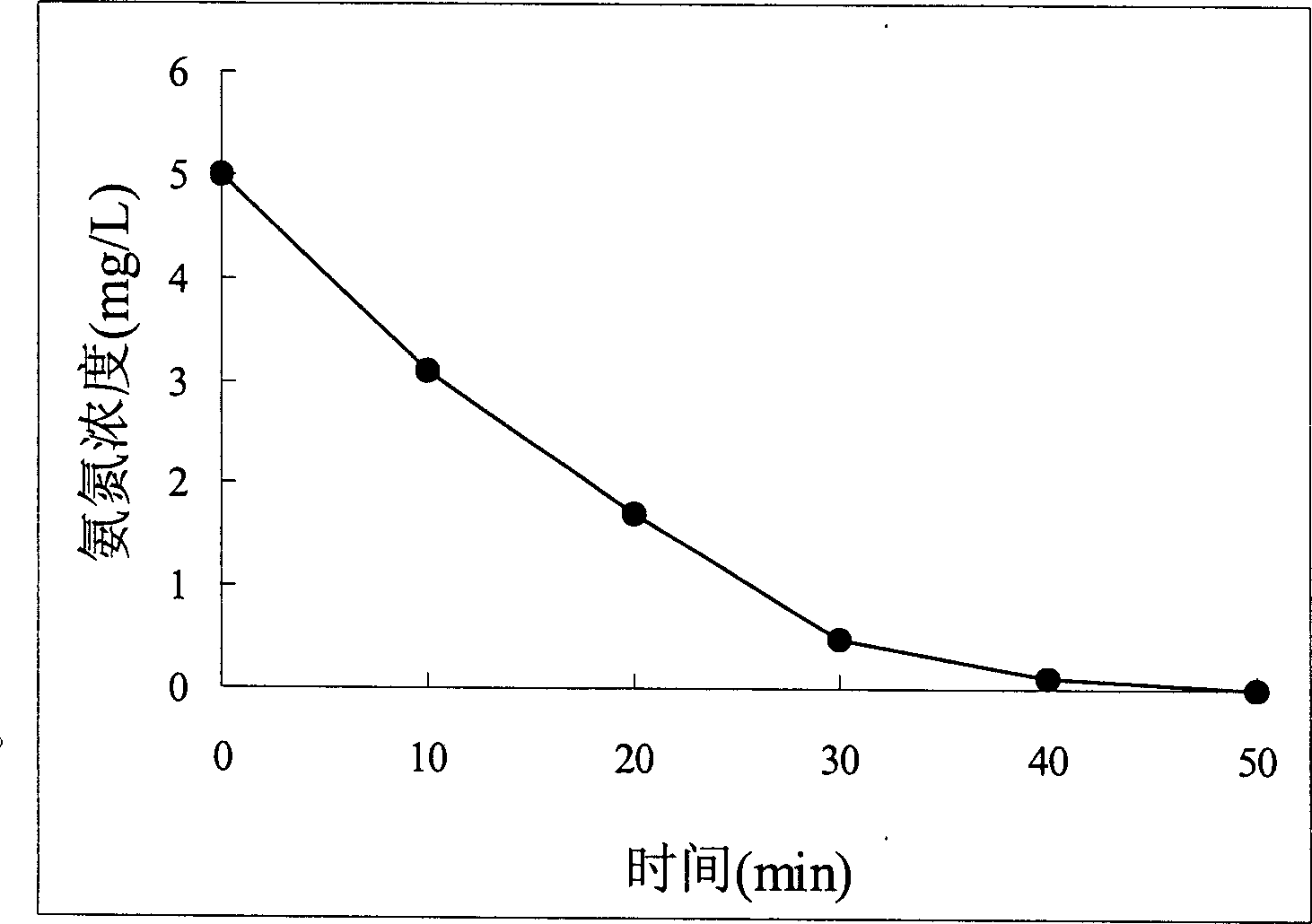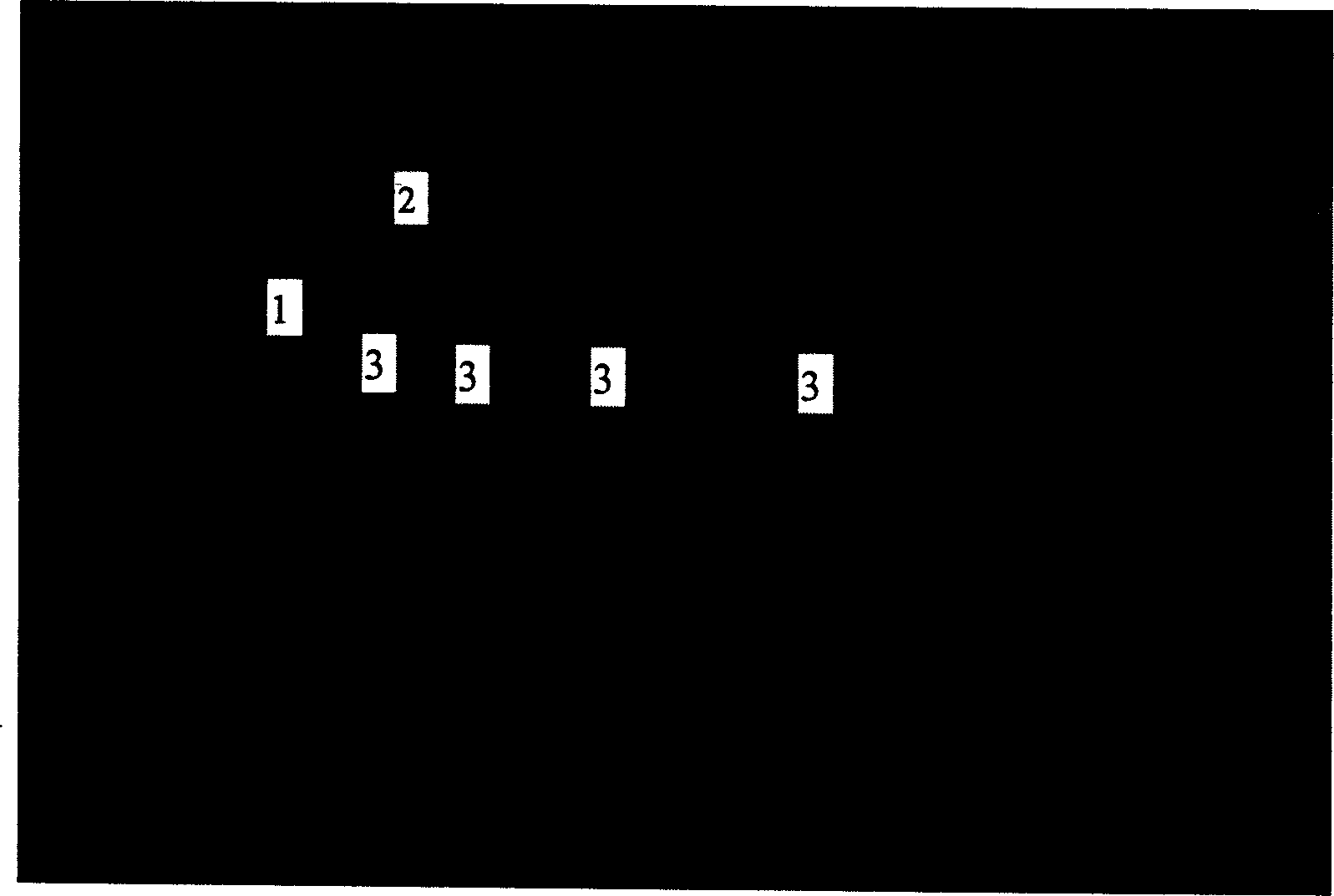Low temperature nitrobacter agent and use thereof
A nitrifying bacteria agent and a low-temperature-resistant technology, applied to the low-temperature nitrifying bacteria agent and its application field, can solve the problems of unsatisfactory efficiency, unsatisfactory ammonia nitrogen removal ability and efficiency, insufficient ammonia nitrogen removal efficiency and ability, etc.
- Summary
- Abstract
- Description
- Claims
- Application Information
AI Technical Summary
Problems solved by technology
Method used
Image
Examples
Embodiment 1
[0030] Example 1 Nitrifying bacteria agent to the ammonia nitrogen removal result of simulated seawater
[0031] The prepared low-temperature nitrifying bacteria agent was inoculated into artificially prepared simulated seawater containing 5 mg / L of ammonia nitrogen at an inoculum amount of 5%, and cultured on a shaking table at 25°C to carry out the experiment of removing ammonia nitrogen. reaction can be completely removed. The result is shown in Figure 3.
Embodiment 2
[0032] Example 2 Ammonia Nitrogen Removal Experiment of Simulated Small System Operation After Filling Films
[0033] After the low-temperature nitrifying bacteria agent is formed on the carrier filler according to the operation in the embodiment, the test of removing ammonia nitrogen is carried out in the simulated small system. The circulating seawater of the simulated small system is 3m 3 , the effective volume of the bioreactor is 0.300m 3 , which is 1 / 10 of the circulating seawater. The filler in the bioreactor is a natural plant carrier filler, and the filling degree reaches a specific surface area of 100m 2 / m 3 , At the end of October and the beginning of November, the removal experiments of different ammonia nitrogen concentrations were carried out, and the results are listed in Table 1.
[0034] date
[0035] It can be seen from Table 1 that when the water temperature is low, the removal efficiency of the ultra-low concentration of ammonia nitrogen in...
example 3
[0036] In the scallop nursery of Qingdao Jinying Ocean Technology Development Co., Ltd., see the biological treatment system figure 2 . The on-site circulating seawater seedling cultivation test was carried out, and circulating seawater was used throughout the seedling cultivation cycle (about 2 to 3 weeks), and the seedlings were poured into the pond once in about 4 days during the period. During this period, the ammonia nitrogen in the influent and effluent water of the biological treatment system was detected. The results showed that under the condition of water temperature of about 17°C, the concentration of ammonia nitrogen in the influent water was 50-65 μg / L, and the concentration of ammonia nitrogen in the effluent was maintained below 30 μg / L. The requirements ensured the smooth progress of scallop seedlings.
PUM
 Login to View More
Login to View More Abstract
Description
Claims
Application Information
 Login to View More
Login to View More - R&D
- Intellectual Property
- Life Sciences
- Materials
- Tech Scout
- Unparalleled Data Quality
- Higher Quality Content
- 60% Fewer Hallucinations
Browse by: Latest US Patents, China's latest patents, Technical Efficacy Thesaurus, Application Domain, Technology Topic, Popular Technical Reports.
© 2025 PatSnap. All rights reserved.Legal|Privacy policy|Modern Slavery Act Transparency Statement|Sitemap|About US| Contact US: help@patsnap.com


